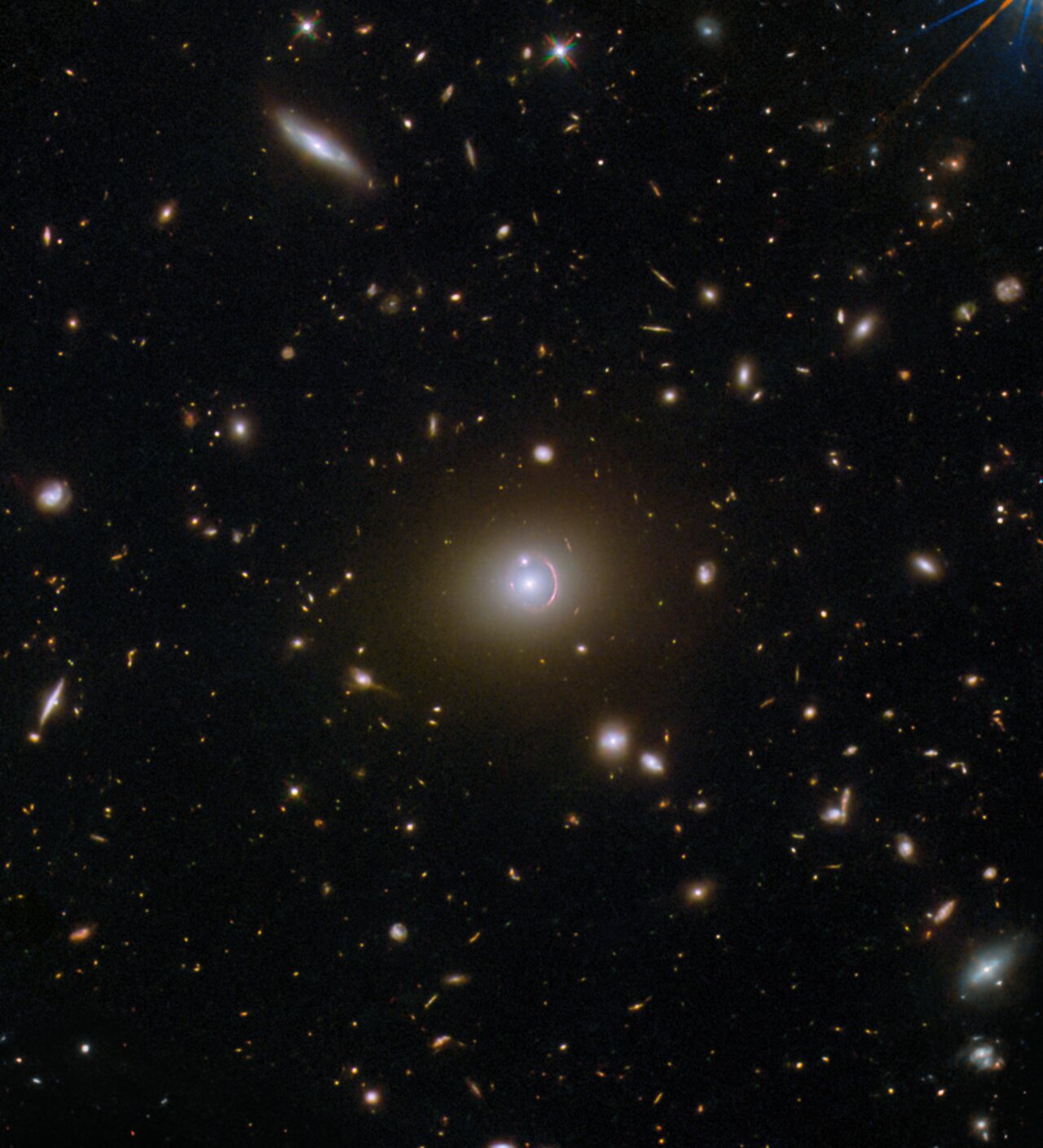Cosmos SDSS J020941.23+001600.7
A very distant galaxy that lies 19.5 billion light-years from Earth? Or a much closer luminous red galaxy that is a (relatively) small 2.7 billion light-years away? Or a third galaxy that appears to be fairly close to the second? The answer, perhaps confusingly, is that we are looking at all three. More precisely, we are looking at light emitted from all of those galaxies, even though the most distant galaxy lies directly behind the first as seen from Earth. In fact, it is that very alignment that makes the particular visuals in this image possible.
The central bright dot in this image is one of the closer galaxies, known by the lengthy — but informative — name of SDSS J020941.27+001558.4 (galaxy names in this format provide precise information about their location in the sky). The other bright dot above it — that appears to be intersecting a curving crescent of light — is SDSS J020941.23+001600.7, the second closer galaxy. And finally, that curving crescent of light itself is the ‘lensed’ light from the very distant galaxy. This is known as HerS J020941.1+001557, and it is also an interesting example of a phenomenon known as an Einstein ring.
Einstein rings occur when light from a very distant object is bent (or ‘lensed’) about a massive intermediate (or ‘lensing)’ object. This is possible because spacetime, the fabric of the Universe itself, is bent by mass, and therefore light travelling through spacetime is as well. This is much too subtle to be observed on a local level, but sometimes becomes clearly observable when dealing with curvatures of light on enormous, astronomical scales, for example, when the light emitted from a galaxy is bent around another galaxy or galaxy cluster. When the lensed object and the lensing object line up just so, the result is the distinctive Einstein ring shape, which appears as a full or partial circle of light around the lensing object, depending on how precise the alignment is. This partial Einstein ring is of particular interest as it was identified thanks to a citizen science project — SPACE WARPS — meaning that members of the public enabled the discovery of this object!
